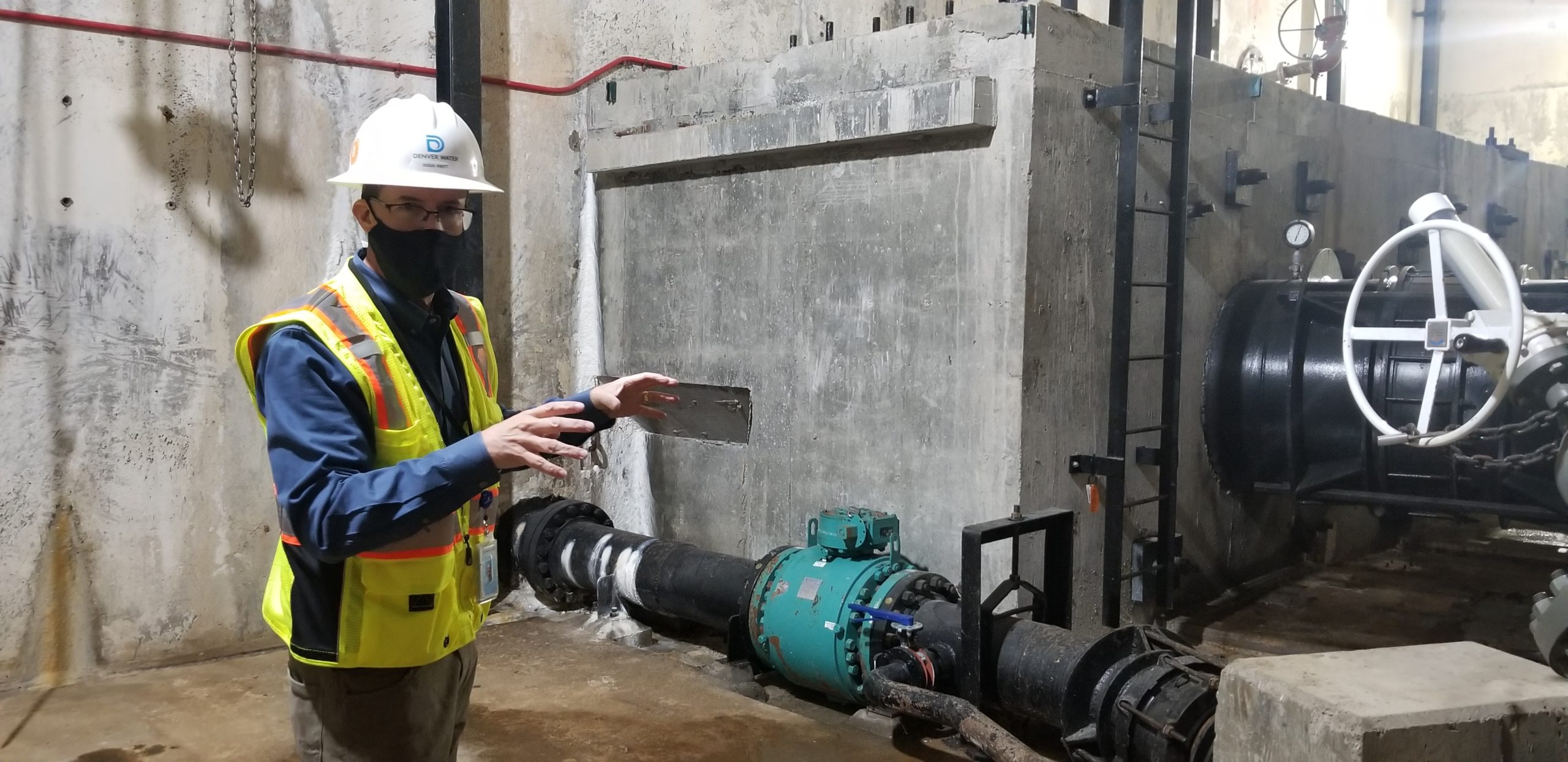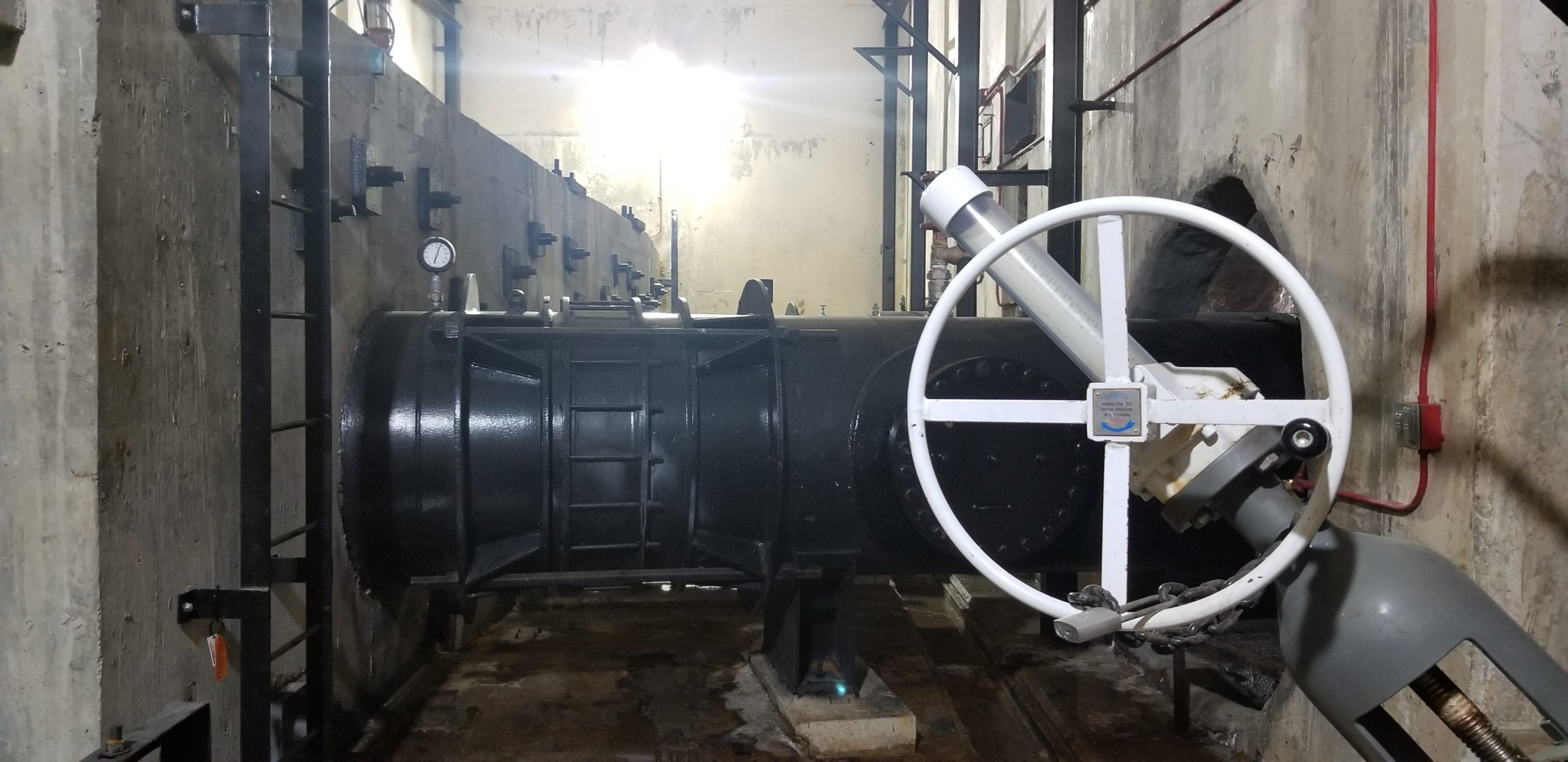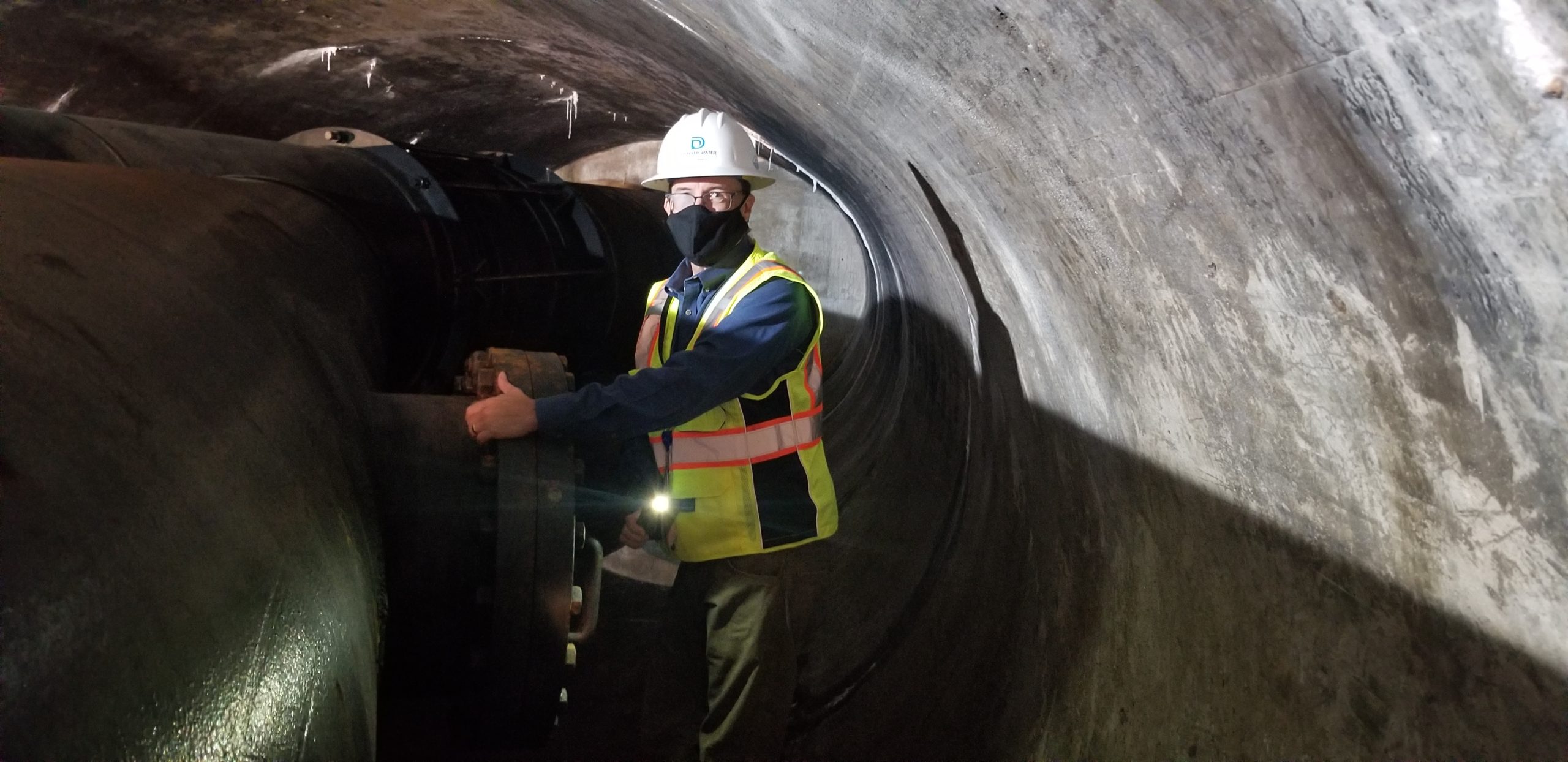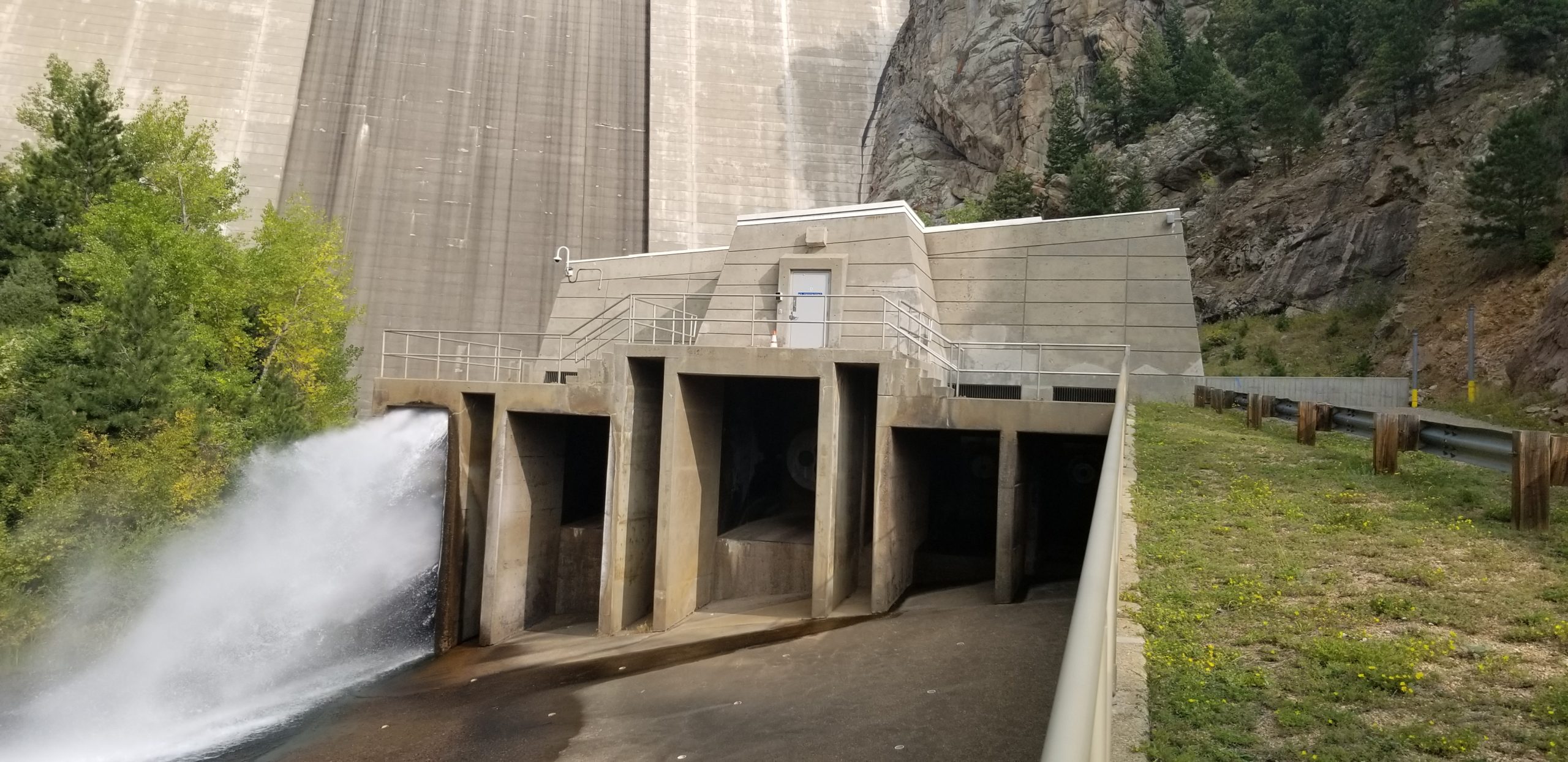
Big remodeling job at Gross Reservoir
Next time you grumble about a big home maintenance project — say, changing out the gutters on your house — just remember it could be tougher. So much tougher.
At Gross Reservoir, one of the most important reservoirs in Denver Water’s system, it’s time to replace the outlet works, a seven-month job so big it will require sawing up massive slabs of concrete and removing fat steel pipes so big a short person can walk through them.
The outlet works are a critical part of any big dam.
They are essentially a set of valves and pipes that control the flow of water from the bottom of a reservoir into a river or creek below the dam.
You need them to work well, able to withstand high pressures and control releases of water and ensure the right balance between the amount of water coming into a reservoir and the amount going out.
Tucked under the dam at Gross, the outlet works were built along with the dam in the 1950s.
“State of the art,” at the time, explained Denver Water engineering manager Doug Raitt. “Not so much anymore.”
“Just about everything you see in here is going to be removed,” Raitt said, touring a damp cavern thick with gargantuan pipes, valves, anchors, ladders and bulky concrete walls.
It’s a job that might make you reconsider complaining about moving the family hutch.
The 70-year-old outlet works are drenched in the dam’s history. They are situated in roughly the same passageway where South Boulder Creek was originally diverted around the construction occurring in the middle of the canyon.
Now, they’re to be remodeled following a demolition project that will take until the spring of 2021.
The project not only requires removing massive amounts of materials but begins by first slicing all of it into pieces small enough to be moved in the first place.
The outlet works did get an initial upgrade in the 1970s, with the construction of a valve house just to the south of the dam. That project took some of the pressure off the outlet works underneath Gross, rendering some of the pieces obsolete.
Even so, much of the equipment was left in place. Now, in anticipation of an entirely new system, the old stuff must go.
“Saw it up into bits and haul it out,” Raitt said so matter-of-factly it almost sounded easy, until he noted each of the “bits” will weigh around 8,000 pounds.
The multiple pipes that currently occupy the cavern beneath the dam will be replaced by a single, 6-foot-diameter pipe custom manufactured out of state. The new pipe will do the job of four pipes it’s replacing, conveying water from the dam toward the valve house and powerhouse downstream.
The upgrades also extend to the valve house, where three big valves also will be retired and replaced.
There, the project’s footprint won’t be quite as cramped as the demolition and installations in the cavern. But it will need to be done quickly, in a just-in-time fashion so that the new outlet works can be restarted in time for runoff season in mid-April.
Raitt emphasized that the outlet works project is necessary — regardless of the planned expansion of Gross Reservoir — and will ensure continued safe operations at the facility.
“The (current outlet works) is really at the end of its service life,” Raitt said. “It’s reached the point that from a dam safety perspective, it can’t wait.”
While the project is compatible with plans to raise Gross Dam by 131 feet, a project approved and ordered in July by the Federal Energy Regulatory Commission after 17 years of permitting, it must be done regardless.
“This project stands alone, is required and necessary,” Raitt said.
The same agency, FERC, that has ordered Denver Water to move ahead with expansion of the reservoir, separately approved the replacement of the outlet works in September.
Raitt noted said that it’s important for the public to understand the two projects, the outlet works upgrade and the planned dam expansion, are distinct.
He wants residents who see construction activity and equipment moving near the base of the dam this fall to understand the separate nature of the outlet works project so no one gets the impression that action is moving ahead on the expansion project ahead of ongoing permitting work with Boulder County.
He noted similar work must be done at all dams, eventually.
Denver Water has conducted related efforts on its facilities at Antero, Cheesman, Eleven Mile Canyon, Dillon and Williams Fork reservoirs.
“All the older dams have outlet works that were modern when they were put in,” Raitt said. “But those older dams, they’re aging, and you have to keep updating.”
Just like the gutters on your house.




